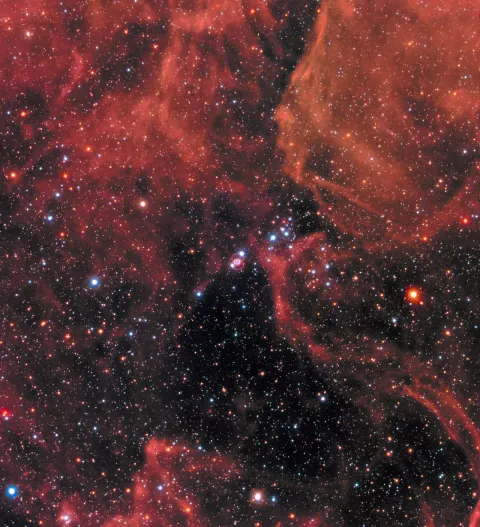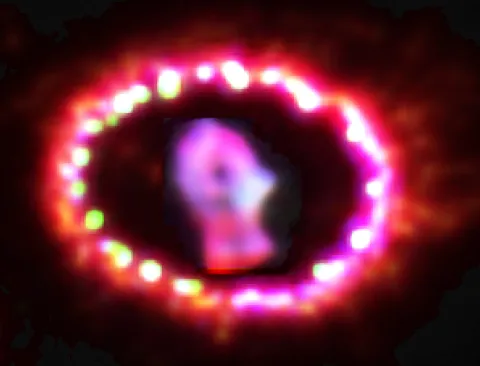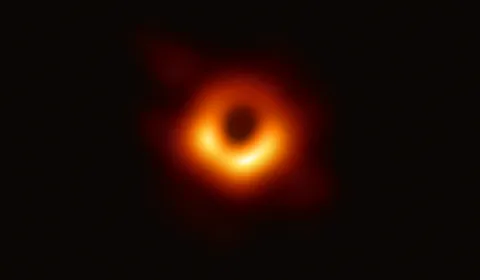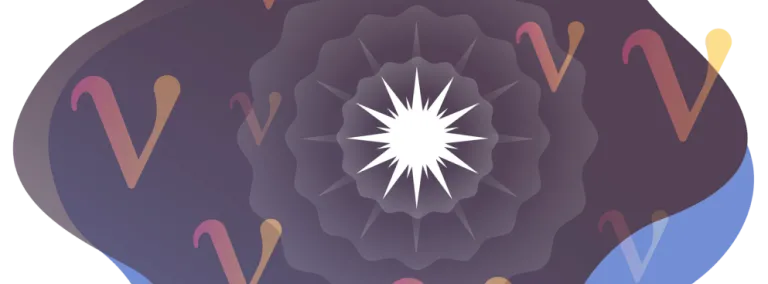Why DUNE? Exploring supernovas, neutron stars and black holes
Part II in our series exploring the science goals of the international Deep Underground Neutrino Experiment
Throughout the 13.8-billion-year lifetime of the universe, countless generations of stars have slowly warmed, forged elements in their core and, eventually, perished. The largest of these stars die in brilliant supernova explosions that hurl elements into deep space. Over the ages, the broiling clouds of ancient supernovas coalesced to form galaxies, new stars and even our own solar system.
Astronomers have long studied this rarely witnessed process. In the twentieth century, particle physicists discovered that neutrinos, lightweight particles produced in massive quantities in supernovas, are the first to evacuate during supernova explosions.
The Deep Underground Neutrino Experiment’s (DUNE) Far Detector at Sanford Underground Research Facility (Sanford Lab) will be monitoring a beam of neutrinos created 800 miles away at the Department of Energy’s Fermilab, the host laboratory for DUNE. The Far Detector will also be tuned to see any neutrinos streaming from a nearby supernova. Such neutrino interactions could give researchers insight into one of the explosive processes that formed the elements in our solar system, our planet and even our bones.
The dawn of neutrino astronomy
In 1987, astrophysicists witnessed the death throes of a star. For the first time since the dawn of modern science, researchers observed a core-collapse supernova in a nearby satellite of the Milky Way. From this massive stellar explosion, underground labs in the United States, Russia and Japan detected a grand total of about 25 neutrinos. They named it Supernova (SN) 1987A.

"I recall hearing a physicist once say that the name SN 1987A hints at the eternal optimism of scientists,” said Mark Hanhardt, astrophysicist and support scientist at Sanford Lab. “This was the closest supernova in nearly 400 years, and astronomers called it 1987A—just to make sure we'd have room for a 1987B later that year."
Other supernovas continued to explode in space that year, but B, C and D never made headlines—they were too distant to provide an observable neutrino flux in underground detectors. Still, the handful of neutrinos detected from 1987A provided enough data to keep astrophysicists busy for decades. Hundreds of physicists have scrutinized these few of subatomic interactions since, trying to make sense of complex supernovas.
If one of the billions of stars in our galaxy goes supernova during DUNE’s lifetime, however, DUNE will see more than a handful of neutrinos—it will see thousands.
“I like to joke that if DUNE sees a supernova in our galaxy, we are all going to suddenly become astrophysicists,” said Ryan Patterson, DUNE physics co-coordinator and professor of physics at the California Institute of Technology (Caltech). “The data will be so rich that everyone is going to want to study it. It’s that fascinating.”
Catastrophe in space, neutrino signals on Earth
A core-collapse supernova occurs when massive stars—at least 8 times larger than the sun— reach the end of their lives. These massive stars are element-forgers, creating lightweight elements like hydrogen and helium first, then working their way up the periodic table to form heavier and heavier elements like iron.
For most of its life, the pull of a star’s gravity is balanced by the energy created through nuclear fusion. Toward the end of its life, the scales tip. The star’s own gravitational pull becomes stronger than the energy it creates from fusion and it collapses under its own weight.
“It becomes tremendously dense—all the falling matter from an enormous star is compacted to a radius of 10 kilometers, the size of a small city,” said Kate Scholberg, co-convener of DUNE’s supernova working group and professor of physics at Duke University.
During this catastrophic scrunch, physics get strange. Magnetic fields increase exponentially, particles are created en masse, and matter becomes so dense that even neutrinos begin to interact with other neutrinos.
“Neutrinos are actually trapped inside the star for less than a second, which is mind blowing if you’re a neutrino physicist,” Scholberg said. “Neutrinos interact so rarely; you can’t imagine anything being able to stop all of them at once.”
Next, the entire mass of the star rebounds. A massive shockwave propagates outward, tearing the star apart and tossing elements into the universe. Neutrinos escape this dense cloud first, scattering in all directions and whisking away nearly all of the supernova’s energy.

“More than 99 percent of the supernova’s energy escapes the star in the form of neutrinos,” Scholberg said.
In the wake of the neutrino exit, the shockwave continues to pass through the star, causing the star to brighten and create exotic new elements. Gold, silver, platinum and uranium are created here, just in time to be tossed deep into space. Ultimately, whatever mass remains will collapse once more, settling into either a stable neutron star or a black hole, an object so dense that it swallows everything within its event horizon.
Despite this astonishing description, the details of what happens during a supernova explosion are still quite fuzzy to astronomers. When the resulting torrent of neutrinos passes through DUNE’s detectors, the traces they leave will shed light on supernovas, the formation of neutron stars and black holes, and even neutrinos themselves.
Harbingers of the supernova
Because neutrinos escape first and travel just shy of the speed of light, they will wash through DUNE’s detectors hours before light from the supernova becomes visible on Earth. Thus, neutrinos act as an early detection system, alerting astronomers to search the skies for the telltale brightening of a dying star. Adding to data from neutrino experiments and telescopes, gravitational wave detectors also expect to detect ripples in spacetime from the event.
“If we could combine the detection of neutrinos, light and gravitational waves—all this multi-messenger information from different experiments would be incredibly rich,” said Inés Gil-Botella, co-convener DUNE’s supernova working group and senior scientist at CIEMAT national lab in Spain.
Neutrinos can also tell researchers a lot about what happens after they leave the re-collapsing star. If the supernova settles back into a neutron star, researchers can count on a steady 10-second stream of neutrinos. However, if a black hole forms, its gravity will suck back all the neutrinos that were still within the event horizon.
“That would be the coolest thing to see—the birth of the black hole,” said Scholberg. “You'd see this really intense flux of neutrinos and then—bam! —it would just stop.”

While neutrinos from a supernova can document the last moments of a star’s life, they will also be studied by researchers who want to know more about neutrinos themselves.
“You can think of supernovas as special laboratories,” Gil-Botella said. “The conditions are so unique—the temperatures and densities are so high— that we could never replicate them on earth.”
Seeing how neutrinos interact and react in this distinctive environment could tell physicists things about their nature that they would never see in ambient neutrinos or even DUNE’s beamline. The way neutrinos flee the supernova, how quickly they travel through space and how they oscillate during their trip could shed light on the mass of a neutrino and even provide insight into physics beyond the Standard Model.
“It's a virtuous circle,” Scholberg said. “The more we learn about neutrinos from lab experiments, the easier it is to learn about the supernova. The more you know about the nature of a supernova, the easier it is to extract the neutrino properties. Each sphere helps the other.”
So, why DUNE? Within a mere 10 seconds, DUNE’s detectors could gather enough data to transform our understanding of the death throes of a star. The data would take years to untangle, but within it lies answers to the explosive evolution of our universe.
Even so, there’s even more to DUNE than searching for the origin of matter and peering into exploding stars. Stay tuned for part III of our series of stories about the science of DUNE.
Sanford Lab is operated by the South Dakota Science and Technology Authority (SDSTA) with funding from the Department of Energy. Our mission is to advance compelling underground, multidisciplinary research in a safe work environment and to inspire and educate through science, technology, and engineering. Visit Sanford Lab at www.SanfordLab.org.
The Office of Science of the U.S. Department of Energy is the single largest supporter of basic research in the physical sciences in the United States and is working to address some of the most pressing challenges of our time. For more information, please visit energy.gov/science.
